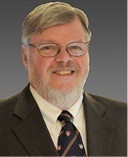Vendors and providers have worked to make examinations safer
Nuclear medicine (NM) is the second largest source of medical radiation exposure after CT. However, patients who had a NM examination a decade ago most likely received a higher radiation dose than a patient in 2013.

Over the past few years the efforts of vendors and providers began to make NM exams safer.
Initiatives by vendors and diagnostic imaging professionals to reduce radiation dose to patients undergoing a CT exam have been underway for many years. The global Image Gently campaign to reduce radiation dose exposure to children first started with CT. The campaign’s website now includes nuclear medicine, as does the Image Wisely campaign targeted at adults.
However, nuclear medicine professionals still consider dose awareness in molecular imaging to be in its infancy, according to Dr Frederic Fahey, Director of Nuclear Medicine/PET Physics of Boston Children’s Hospital and Dr Adam M Alessio, research associate professor of Radiology at the University of Washington in Seattle. They cochair the SNMMI Dose Optimisation Working Group of the Society of Nuclear Medicine and Molecular Imaging (SNMMI) – the largest international scientific organisation dedicated to molecular imaging and therapy, with over 18,000 global members. The organisation’s five most important issues were listed in the society’s outgoing presidential lecture delivered at its 2013 annual meeting in Vancouver. One of these ‘Top 5’ issues related to radiation exposure concerns. A second focused on the need to continue to develop, improve, and promote the use of evidenced-based and patientcentred guidelines as well as the appropriate use of nuclear medicine. The need to educate about dose optimisation has become so important to SNMMI that it established a dedicated section in its online resource centre (www.snm.org).
Patient-specific dosimetry can reduce radiation dose because it is calculated specifically for the characteristics of a patient’s body. For the first time in 30 years, a new generation of reference computational phantom model for standardised internal and external dose calculations have been defined. Introduced in 2012, these image-based models of variously sized adults, children, and pregnant women replace second- generation anatomic models.
The Radiation Dose Assessment ResourceTask Force’s RADAR phantom series is being implemented in standardised software for internal dose calculations. This will be used to produce new standardised dose estimates for radiopharmaceuticals and other applications.
Associate professor Michael G Stabin PhD, of Vanderbilt University School of Medicine chairs the RADAR Task Force. In a keynote lecture at SNMMI’s annual meeting, he emphasised that patient-centred dosimetry should be globally adopted, especially with the tools becoming available. All patients will benefit, especially obese patients.
Today more than 300 million people are obese – and these need special protocols. Diagnostic quality exams can be difficult to obtain, hindered by soft-tissue attenuation and inadequate body coverage. New models of cadmium-zinc-telluride (CZT) systems for nuclear cardiology, such as the GE Healthcare Discovery NM 530c, have radiation dose reduction features and can significantly reduce scanning time by two to three times, reducing the risk of motion artefacts.
HybridSPECT/CT scanners, such as GE’s Optima NM/ct 640, combines a general purpose gamma camera with a newly developed 4-slice CT. The system can potentially reduce scan time or injected patient radiopharmaceutical dose by up to 50% without compromising image quality. The latest generation of PET/ CT scanners have dose optimisation features. A study of 240 patients who had PET/CT whole body exams at the Queen Elisabeth II Health Sciences centre in Halifax, Nova Scotia, identified a 32% dose reduction when CT dose optimisation was used. Medical physicist Elena Tonkopi wrote in the American Journal of Roentgenology article (August 2013) that the dose reduction was achieved with a faster X-ray tube rotation time, increased X-ray beam coverage, and higher noise index value.
The improvements in noise reduction software algorithms make it possible to obtain images of comparable quality using a low radiation dose as those images acquired with ‘standard protocol’ doses. Some software, such as that offered by UltraSPECT with wide beam reconstruction (WBR) image reconstruction technology for cardiac and bone applications, can be used with currently installed camera systems. A study of 462 patients presented by physicians from New York City’s St. Luke’s Roosevelt Hospital, at September’s annual meeting American Society of Nuclear Cardiology (ASNC’s), found that 77% of the SPECT/PET myocardial perfusion imaging used with a half-dose protocol were below a radiation dose of 9 mSv, meeting ASNC’s new 2014 low dose guidelines. At the SNMMI meeting, Siemens introduced a new scanner, the Biograph mCT Flow. Dr James Williams, CEO of Siemens Healthcare’s molecular imaging business unit, stated that this is the first PET/CT system to offer continuous motion PET/CT scanning. Its anatomy-based FlowMotion technology moves the patient through the systems gantry while continuously acquiring PET data. When combined with its ultra HD•PET, a routine scan can be performed in five minutes. CT radiation dose can be reduced as much as 32%.
Philips’ Astonish TF PET system has a new detector design and architecture, and incorporates timeof- flight functionality and patient motion management with respiratory and cardiac gaited imaging. The Ingenuity TF PET/CT allows low X-ray dose techniques without distortion and incorporates iPatient dose management tools. New systems; new software for protocol planning and reconstruction; new patient-centric dosimetry models – a global NM radiation dose reduction may be only just beginning, but it’s heading in the right direction to make these exams safer for patients.
Profile:
Dr Frederic H Fahey has been director of nuclear medicine/PET physics at Boston Children’s Hospital since 2003. He is also an associate professor of radiology at Harvard Medical School, and was President of the Society of Nuclear Medicine and Molecular Imaging in 2012-2013. He is actively involved in the paediatric Image Gently and adult Image Wisely campaigns to reduce radiation dose exposure to patients receiving nuclear medicine examinations.
29.10.2013











